
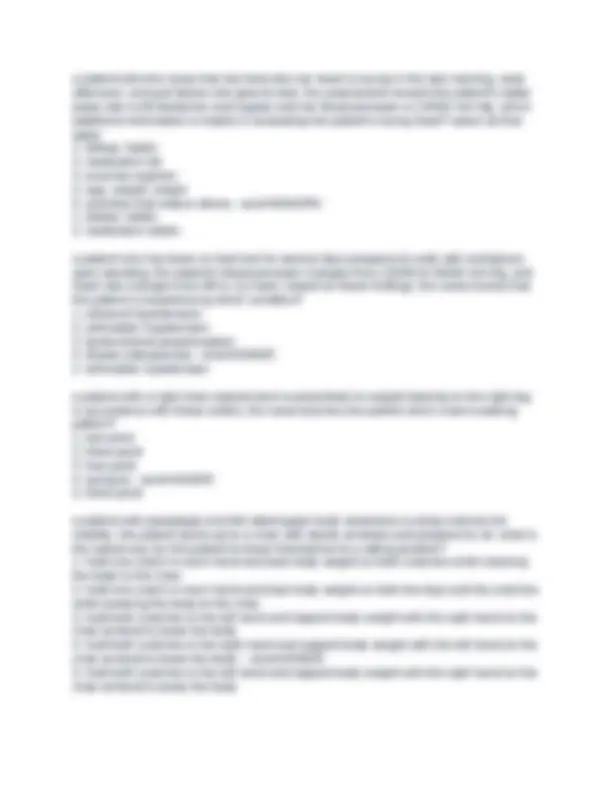
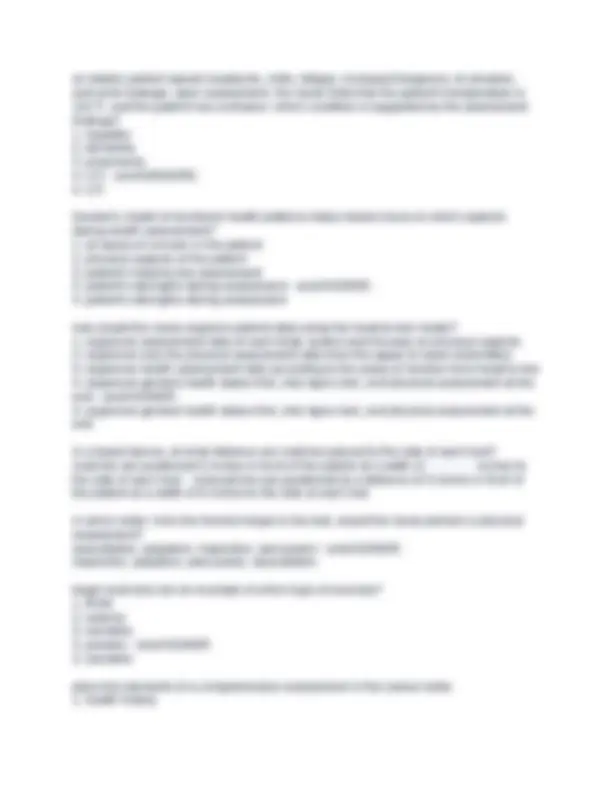
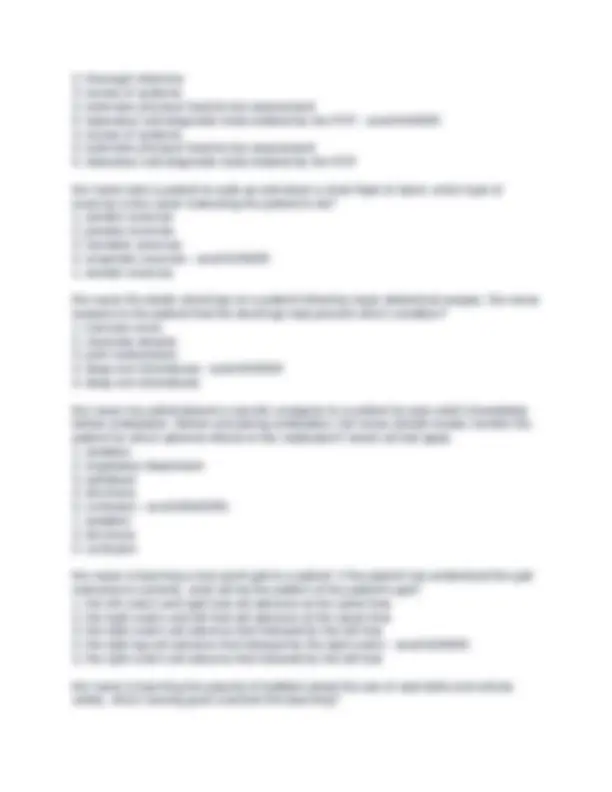
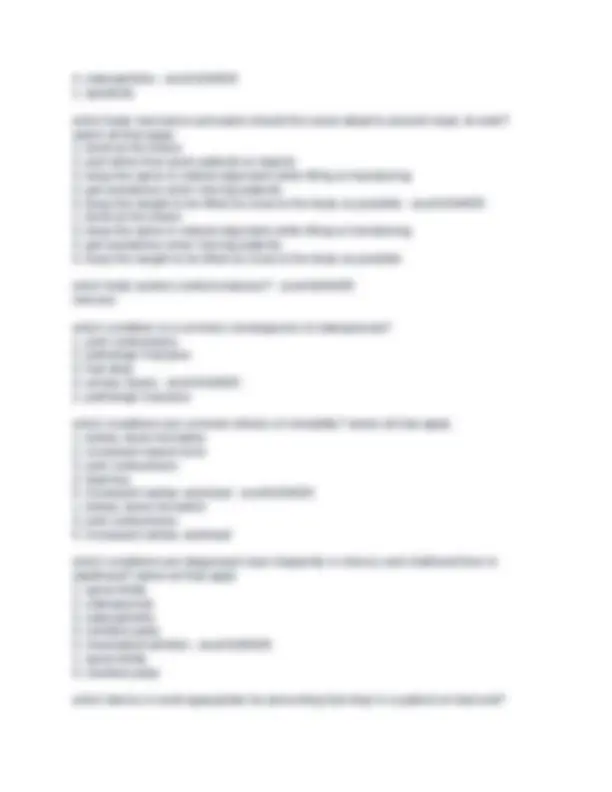
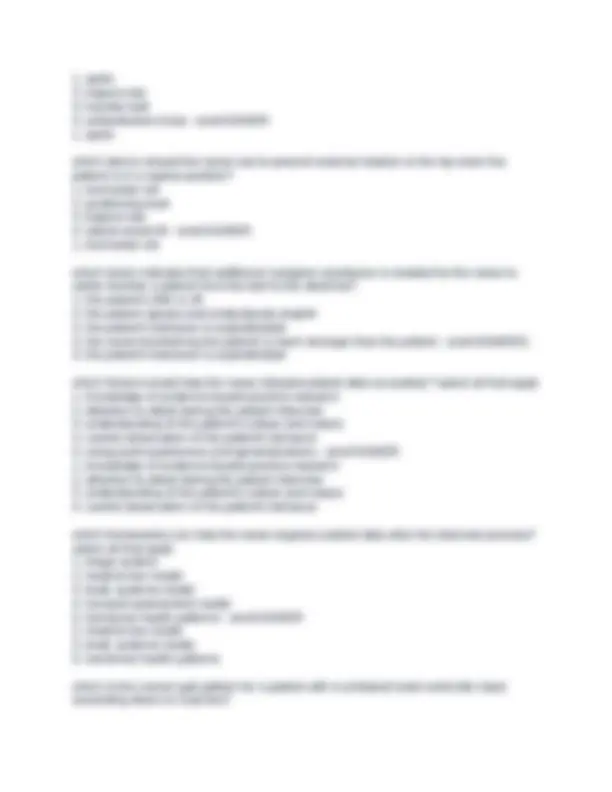
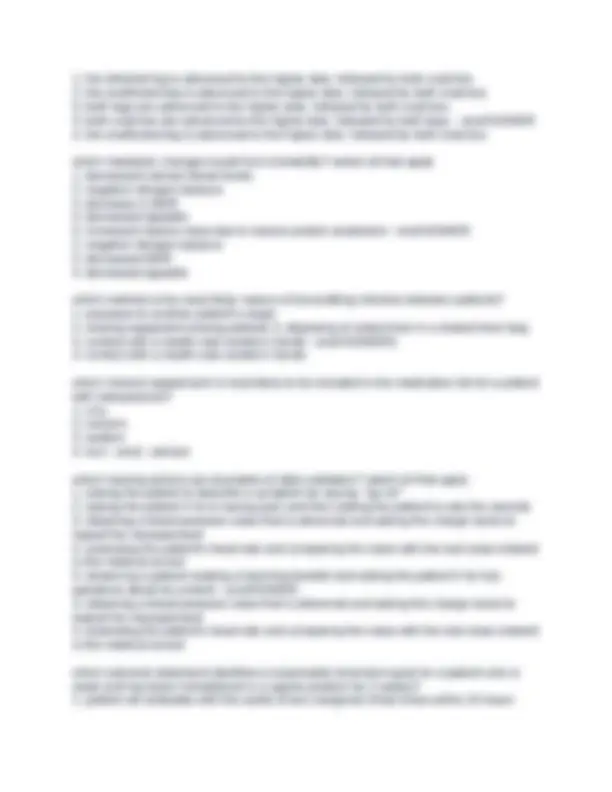


Study with the several resources on Docsity

Earn points by helping other students or get them with a premium plan


Prepare for your exams
Study with the several resources on Docsity

Earn points to download
Earn points by helping other students or get them with a premium plan
Community
Ask the community for help and clear up your study doubts
Discover the best universities in your country according to Docsity users
Free resources
Download our free guides on studying techniques, anxiety management strategies, and thesis advice from Docsity tutors
Various nursing assessment techniques and patient care procedures, including taking blood pressure, assessing patient strengths, organizing patient data, performing physical assessments, and administering medications. It also includes information on deep vein thrombosis prevention, range-of-motion exercises, and gait patterns.
Typology: Exams
1 / 12

This page cannot be seen from the preview
Don't miss anything!







a clinic nurse has been caring for an outpatient with low muscle mass. after a year, the nurse observes that the patient's muscle mass has increased significantly. when asked about this, the patient replies, "I've been exercising a lot." which type of exercise has the patient most likely been performing?
an elderly patient reports headache, chills, fatigue, increased frequency of urination, and urine leakage. upon assessment, the nurse finds that the patient's temperature is 101°F, and the patient has confusion. which condition is supported by the assessment findings?